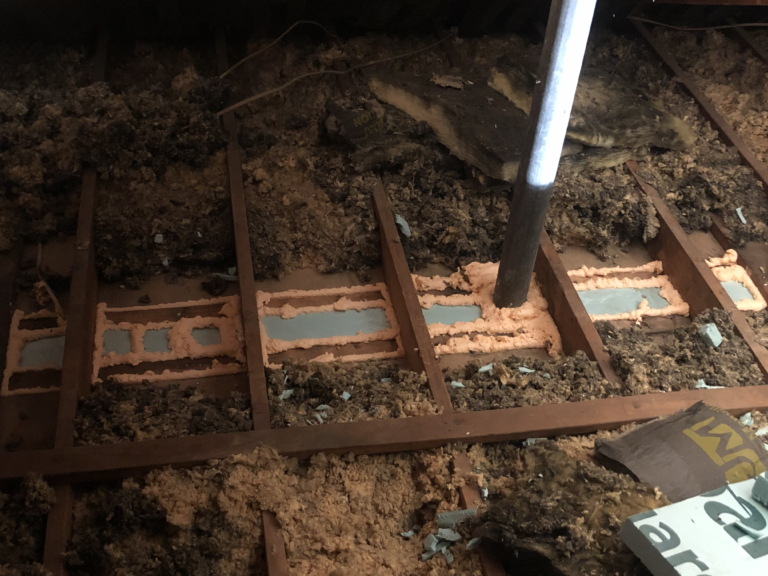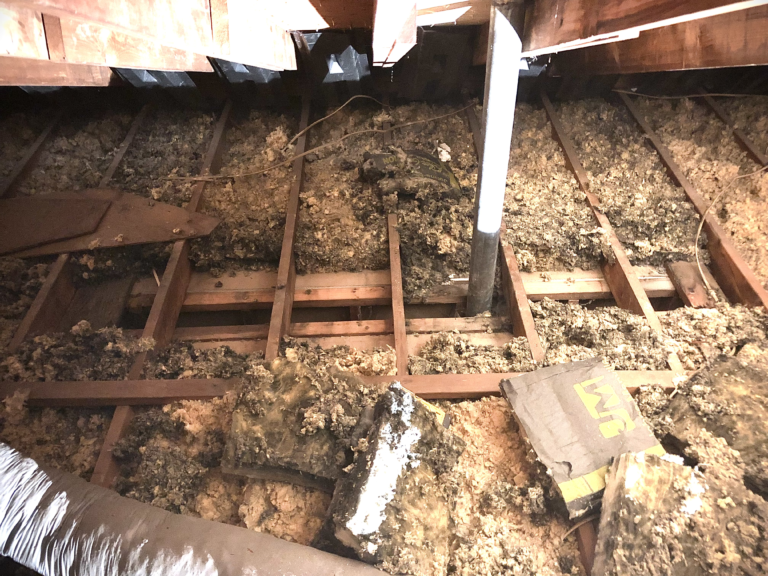ATTIC BYPASSES
 AFTER
AFTER
 BEFORE
BEFORE
Why is it so Important to Air Seal First
Heat Loss
Potential Mold
Heavy moisture content can saturate surfaces leaving them prone to potential mold growth.
Moisture Content
Ice Daming
Attic bearing and partition walls are two different types of walls, that share a similar function. Both types are walls that help in creating partitions within the interior, however the main function of the bearing wall is to support. These walls are built and set in place leaving exposed lumber (usually referred to as top plates) in the attic. The walls are then covered with drywall or gypsum board. When installed, the drywall is secured snugly against the top plate but often leaving a small gap. Collectively these small gaps add up and equate to the equivalent of a hole the size of an open window.
Prior to insulating or adding insulation to the attic, it is extremely important to air seal the top plates along with any and all other bypasses in the attic space. In addition to saving energy and lower the utility bill, air sealing top plates will limit the amount of moisture in the attic, reduce the amount of drafts you may feel throughout the home, prevent heat from escaping into the attic and will keep your home feeling comfortable.
Bulkheads are a designed section of a ceiling that has been lowered or dropped and enclosed. A bulkhead helps transition a ceiling from one space to another. Bulkhead may be found in the kitchen above the cabinets or possibly above the island. They can also be found in the bathroom typically in the shower area. Inside the bulkhead is an enclosed space with a huge void that may be open or connected to the unconditioned attic. Bulkheads are usually un-sealed, uninsulated voids which is an ideal passage for heat to escape during the winter and cool air in the summers. Having proper sealing completed in these spaces will prevent any conditioned air to escape in large amounts.
Air escaping from recessed fixtures in the attic is a common issue that can lead to energy loss, reduced comfort, and higher utility bills. Recessed fixtures, also known as can lights, are commonly installed in ceilings and have a hollow housing that is open to the attic. This can allow air to escape through gaps or cracks in the housing, creating a pathway for conditioned air to leak out of the home and for unconditioned air to leak in.
To address air escaping from recessed fixtures in the attic, it’s important to seal any gaps or cracks in the fixture housing. This can be done by installing an airtight barrier around the fixture or using an airtight cover that fits over the fixture. It’s also important to ensure that any insulation in the attic is properly installed and may be prohibited from coming in contact with the fixtures.

